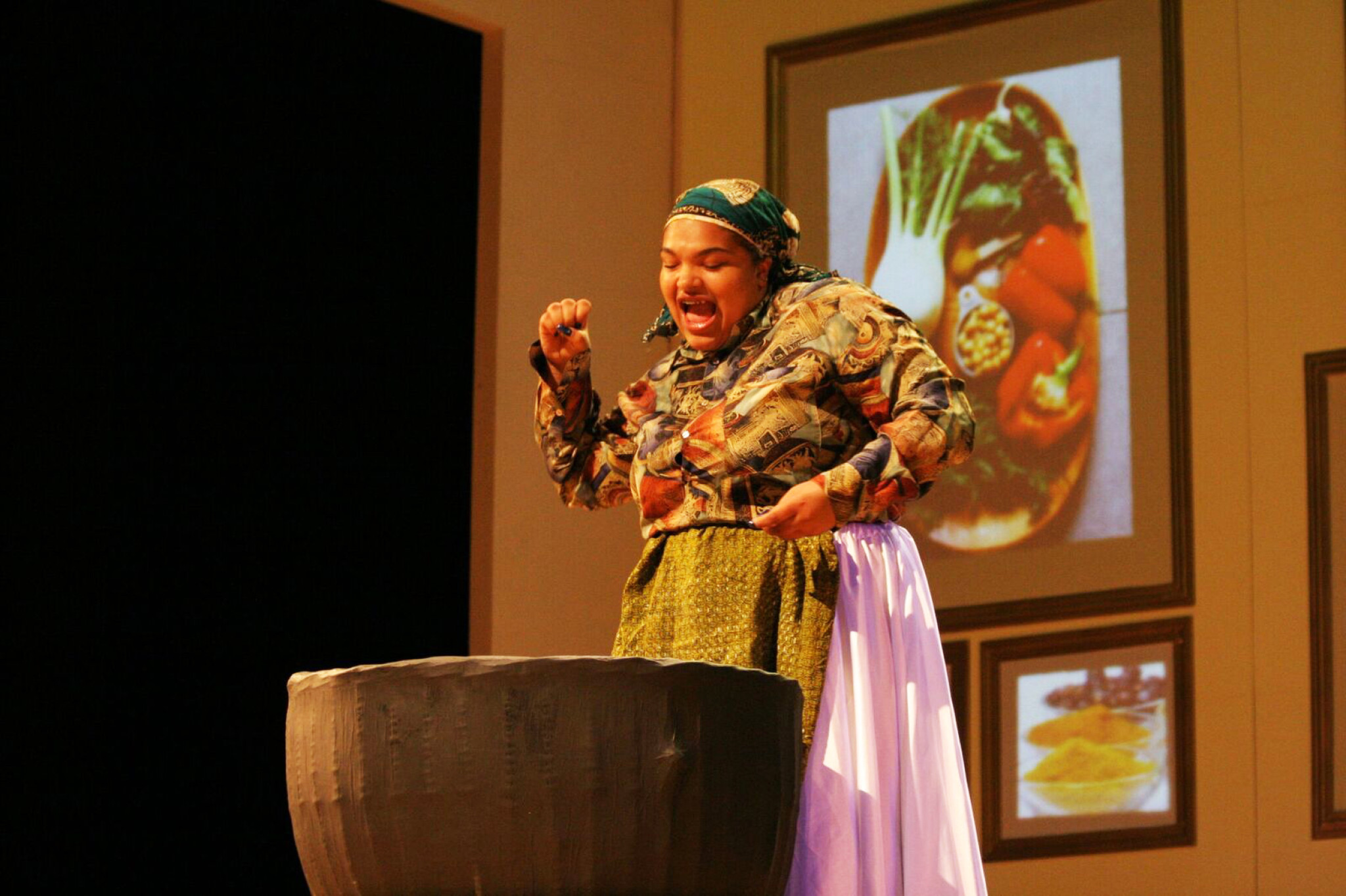Directing a play that gives the audience hard truths about being black throughout American history, satirizing controversial issues, and using music and costume to illustrate different time periods is a huge balancing act. This December, student directors Tanaka Dunbar-Ngwara and Kira Norwood undertook this feat when they put together their version of The Colored Museum, written by George C. Wolfe. Crowds of parents, students, teachers, and interested residents attended the performances. They were presented with a complex and confrontational series of scenes, each one addressing the countless dimensions of black identity in America. Many of the characters’ dilemmas strike close to home with both the actors and the members of the audience. There is a scene where a black woman must choose between two hair pieces representing different personalities, and one about a black man throwing away soul music records to distance himself from black culture.
Despite the heavy subject matter, the tone of the play was often exaggerated and humorous. “[The play] is campy, so one could be tempted to lean closer to the cheesy side, and then the story loses its impact,” explained Dunbar-Ngwara, who directed scenes and costumed the play. “However, if we lean too much into the real, it stops making sense and feeling like the immersive experience the world of this play is.” The actors’ connections with their characters’ struggles “allows actors to use personal experience, but also maintain a distance,” which Dunbar-Ngwara thinks is an important balance to have as an actor. The Colored Museum touches on many subjects that are considered too sensitive or taboo to discuss in school and polite conversation, like the beauty industry’s manipulation of black women, or how African Americans are used as comic relief and sinful sex symbols in entertainment. “The play gets its power by being about what people don’t want to talk about!” said Dunbar-Ngwara.
One scene, “La La’s Opening,” is mostly a speech given by an entertainer who is frantically trying to hold her insecurities at a distance. She goes to France and marries a man there who promises to make her successful, “but once they get back to America, she realizes that he doesn’t love her because she’s Sadie [her real identity], he loves her because she’s black, and that’s exotic,” said Norwood, who directed the scene. La La has changed her hair, her clothes, and her voice, but she can’t change the way people perceive her or escape everything that comes along with her skin color. This is one example of the play’s ability to create dramatic pieces that address hard to discuss but very real issues.
Another story focuses on a young black man who is trying to distance himself from black culture and be more accepted in white society by throwing away his records. Putting records by The Temptations in the trash is his effort to assimilate and cut off his cultural roots, but another black man, seemingly a manifestation of his conscience, appears to stop his attempt at assimilation, arguing that he shouldn’t give up the art he loves to have wider appeal. Issues like these are timeless and these scenes may be relatable to many black high school students who deal with complex problems like how they choose to embrace their heritage, or downplay their race.
This play is not out to make anyone feel comfortable. To motivate the cast and crew, Norwood recounts telling them that this is why they have to make this play, because these conversations need to be had. “I definitely don’t think black people are supposed to feel like they need to make white people comfortable,” said Norwood. “That was a conversation that Tanaka, Mr. Winer and I had. How can we get seven black kids to go up on stage and talk the full truth towards an audience of mostly white people, who may not process the intensity behind it?” A main aspect of their approach was to create a rehearsal space where black students in the cast got to have open conversations about all aspects of the play. One goal Norwood articulated was to extend this open conversation, and that this show “is for black youth to see the past and to notice how it hasn’t changed very much, all the same issues are there.”
The performance ended with a theater talkback to answer audience questions and unpack their feelings around the scenes. Perhaps this talkback was part of extending the open conversation and another step towards confronting the complexities of race in America.





